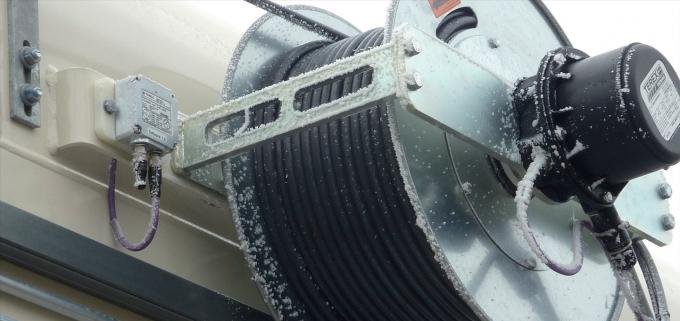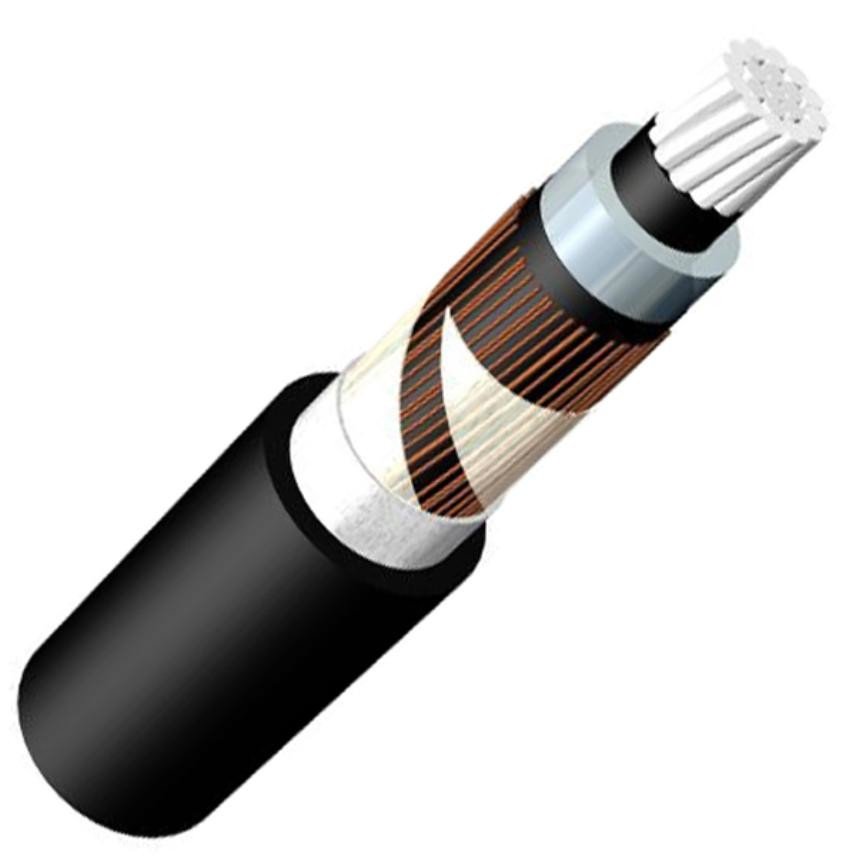What is Cross-Linked Polyethylene Cable – XLPE Cable?
Cross-linked polyethylene cables, or XLPE cables, are a widely used and highly efficient form of electrical cable that offer excellent performance across a broad range of industries.
These cables are known for their high dielectric strength, superior thermal resistance, and durability, making them suitable for applications from low-voltage to extra-high-voltage systems.
In this article, we will explore what makes XLPE cables unique, how they are made, and why they are preferred over other types of cables, such as Chlorinated Polyethylene (CPE) cables.
What is Cross-Linking in XLPE?
The key feature of XLPE cables is the cross-linking process. Polyethylene (PE) is a thermoplastic material, which means that it melts when heated and solidifies upon cooling.
However, through cross-linking, polyethylene can be transformed into a thermoset material—cross-linked polyethylene—which retains its structure even at higher temperatures.
Cross-linking occurs when individual polyethylene molecules are chemically bonded, forming a three-dimensional structure that dramatically improves the material's mechanical and thermal properties.
The process is typically achieved through one of two methods:
Chemical Cross-Linking: In this method, additives such as silane are used to create cross-links between the polymer chains.
Irradiation Cross-Linking: This process uses high-energy radiation to achieve cross-linking. It is often limited to smaller cable sizes due to the limited penetration depth of radiation.
Differences Between XLPE and CPE Cables
While both XLPE and CPE cables are popular choices in the cable industry, they are used for very different applications due to their distinct properties.
Thermal Resistance:
XLPE cables have excellent resistance to high temperatures. They can handle temperatures up to 90°C in normal conditions and even higher in emergencies, making them suitable for high voltage applications.
CPE cables, on the other hand, are more commonly used in environments where chemical resistance is required but have a lower maximum operating temperature.
Mechanical Properties:
XLPE has superior mechanical strength and resistance to abrasion, compared to CPE, making it an excellent choice for heavy-duty applications like underground and high-stress installations.
CPE cables are favored for their flexibility and resistance to chemicals and oils but are not as robust mechanically.
Electrical Properties:
XLPE offers better dielectric properties, which means it is highly efficient as an electrical insulator, especially in high-voltage applications.
CPE cables, while also good insulators, do not match the same level of electrical performance as XLPE.
Cross-linking Process: XLPE requires cross-linking to enhance its properties, while CPE does not undergo this process. Cross-linking gives XLPE better heat resistance and mechanical strength compared to CPE.
Advantages of XLPE Cables
Excellent Thermal Properties
XLPE cables are widely recognized for their ability to perform well at high temperatures. This is crucial in industrial environments where heat is a common challenge.
Because XLPE is a thermoset material, it can handle continuous operation at high temperatures without melting or deforming, unlike traditional PE cables.
Continuous Operating Temperature: 90°C
Short-Circuit Temperature: 250°C for 5 seconds
Emergency Overload Temperature: up to 140°C
Superior Dielectric Strength
One of the standout features of XLPE cables is their high dielectric strength.
This means they can effectively insulate and withstand high electrical stresses, making them a preferred choice for medium voltage (MV), high voltage (HV), and extra high voltage (EHV) applications.
They are commonly used in power distribution and transmission networks.
Long Service Life
The cross-linking process not only improves the cable’s heat resistance but also makes it more durable over time. XLPE cables are known for their long service life, often lasting for 40-50 years in appropriate operating conditions.
They resist moisture, weather, and UV light, making them perfect for outdoor installations or areas with harsh environmental conditions.

Flexibility in Design
While XLPE is a strong and durable material, it also offers good flexibility, allowing for easier installation, especially in cramped or complex environments.
This flexibility, combined with the mechanical strength, allows for a broader range of applications compared to other types of cables.
Processing of XLPE Cables
The manufacturing process of XLPE cables is complex and requires specialized equipment.
The polyethylene insulation is first extruded around the conductor, and the cross-linking is achieved by one of several methods, including:
Chemical Cross-Linking: This method involves the addition of chemicals like silane to the polyethylene during extrusion, followed by a cross-linking process, typically in a Continuous Vulcanization (CV) tube.
Irradiation Cross-Linking: High-energy radiation is applied to the polyethylene insulation after extrusion, inducing cross-linking.
For medium-voltage (MV), high-voltage (HV), and extra-high-voltage (EHV) applications, multiple layers of insulation, semiconductive screens, and sometimes metallic screens are added to the cable.
The cross-linking process ensures that XLPE cables maintain high electrical performance, even in high-voltage systems.
Applications of XLPE Cables
Due to their versatile properties, XLPE cables are used across a variety of industries. Here are some common applications:
Power Distribution
XLPE cables are the industry standard for low-voltage and medium-voltage power distribution systems.
Their superior thermal and electrical properties make them ideal for transferring power safely and efficiently over long distances. They are used in utility networks, industrial plants, and commercial buildings.
High Voltage Transmission
For high-voltage applications, such as those in power transmission networks, XLPE is a go-to material.
The high dielectric strength and thermal resistance ensure that these cables can handle the high electrical stresses found in high-voltage systems without degrading over time.
In subsea applications, XLPE cables are often preferred for their durability and resistance to water and corrosion.
However, in some cases, Ethylene Propylene Rubber (EPR) may be used instead due to its unique characteristics in the marine environment.
Industrial Installations
Industries such as oil & gas, mining, and manufacturing rely on XLPE cables for their ability to withstand harsh conditions like extreme temperatures, high mechanical stress, and exposure to chemicals.
The cables are often used in motors, generators, and other high-power equipment where reliable performance is essential.

Key Standards for XLPE Cables
XLPE cables conform to several international standards, ensuring they meet the necessary safety and performance requirements. Some of the key standards include:
IEC 60502-1: For power cables with extruded insulation and voltage up to 1kV.
IEC 60502-2: For medium voltage cables up to 30kV.
IEC 60840: For high-voltage cables with extruded insulation and voltage between 30kV and 150kV.

